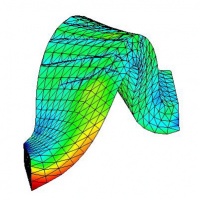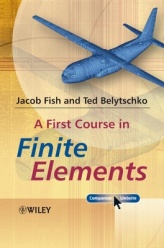(→syllabus) |
(→syllabus) |
||
| Line 34: | Line 34: | ||
{| class="wikitable" style="text-align:center; width: 100%" | {| class="wikitable" style="text-align:center; width: 100%" | ||
|- | |- | ||
| − | ! day !! date !! !! topic !! | + | ! day !! date !! !! topic !! material !! hw !! due |
|- | |- | ||
| − | | tue || mar || 31 || introduction || 1.1,1.2 || [http://biomechanics.stanford.edu/me309/me309_c01.pdf c01] || | + | | tue || mar || 31 || introduction || chapter 1.1,1.2 || [http://biomechanics.stanford.edu/me309/me309_c01.pdf c01] || |
|- | |- | ||
| − | | thu || apr || 02 || motivation / direct approach || 2.1,2.2,2.4 || [http://biomechanics.stanford.edu/me309/me309_h01.pdf h01] || | + | | thu || apr || 02 || motivation / direct approach || chapter 2.1,2.2,2.4 || [http://biomechanics.stanford.edu/me309/me309_h01.pdf h01] || |
|- | |- | ||
| tue || apr || 07 || ansys - introduction (in terman 104) || [http://biomechanics.stanford.edu/me309/me309_c03a.pdf t01] [http://biomechanics.stanford.edu/me309/me309_c03b.pdf t02] [http://biomechanics.stanford.edu/me309/me309_c03c.pdf t03] || || | | tue || apr || 07 || ansys - introduction (in terman 104) || [http://biomechanics.stanford.edu/me309/me309_c03a.pdf t01] [http://biomechanics.stanford.edu/me309/me309_c03b.pdf t02] [http://biomechanics.stanford.edu/me309/me309_c03c.pdf t03] || || | ||
Revision as of 16:05, 25 March 2009
Contents |
me309 - finite element analysis in mechanical design
goals
basic concepts of finite elements, with applications to problems confronted by mechanical designers. linear static, modal, and thermal formulations; nonlinear and dynamic formulations. students implement simple element formulations. application of a commercial finite element code in analyzing design problems. issues: solution methods, modeling techniques features of various commercial codes, basic problem definition. Individual projects focus on the interplay of analysis and testing in product design and development. prerequisite: math103, or equivalent. recommended: me80, or equivalent in structural and/or solid mechanics; some exposure to principles of heat transfer.
grading
- 50 % homework - 4 homework assignments, 12.5% each
- 30 % midterm - closed book, closed notes, one single letter format page of notes
- 20 % project - final homework project
syllabus
| day | date | topic | material | hw | due | |
|---|---|---|---|---|---|---|
| tue | mar | 31 | introduction | chapter 1.1,1.2 | c01 | |
| thu | apr | 02 | motivation / direct approach | chapter 2.1,2.2,2.4 | h01 | |
| tue | apr | 07 | ansys - introduction (in terman 104) | t01 t02 t03 | ||
| thu | apr | 09 | 1d strong and weak forms | chapter 3.1,3.2,3.4 | ||
| tue | apr | 14 | 1d model problems | chapter 3.5,3.6,3.8 | ||
| thu | apr | 16 | 1d beam elements | c06 | h02 | h01 |
| tue | apr | 21 | 2d trianglular elements | m03 | h05 | |
| thu | apr | 23 | ansys - modeling | m03 | ||
| tue | apr | 28 | 2d quadrilaterial elements | m04 | ||
| thu | apr | 30 | isoparametric concept | m04 | h03,h04 | h02 |
| tue | may | 05 | stress calculation - error analysis | m05 | ||
| thu | may | 07 | stress calculation - error analysis | m06 | ||
| tue | may | 12 | thermal analysis | m08 | h03 | |
| thu | may | 14 | thermal analysis | m08 | ||
| tue | may | 19 | modeling errors - validation | m09 | ||
| thu | may | 21 | midterm prep | h04 | ||
| tue | may | 26 | midterm | |||
| thu | may | 28 | special topics in finite element analysis | |||
| tue | jun | 02 | special topics in finite element analysis | |||
| thu | jun | 04 | no class | |||
| fri | jun | 05 | final projects due | h05 |
textbooks
|
fish j, belytschko t cook rd buchanan gr logan dl |


